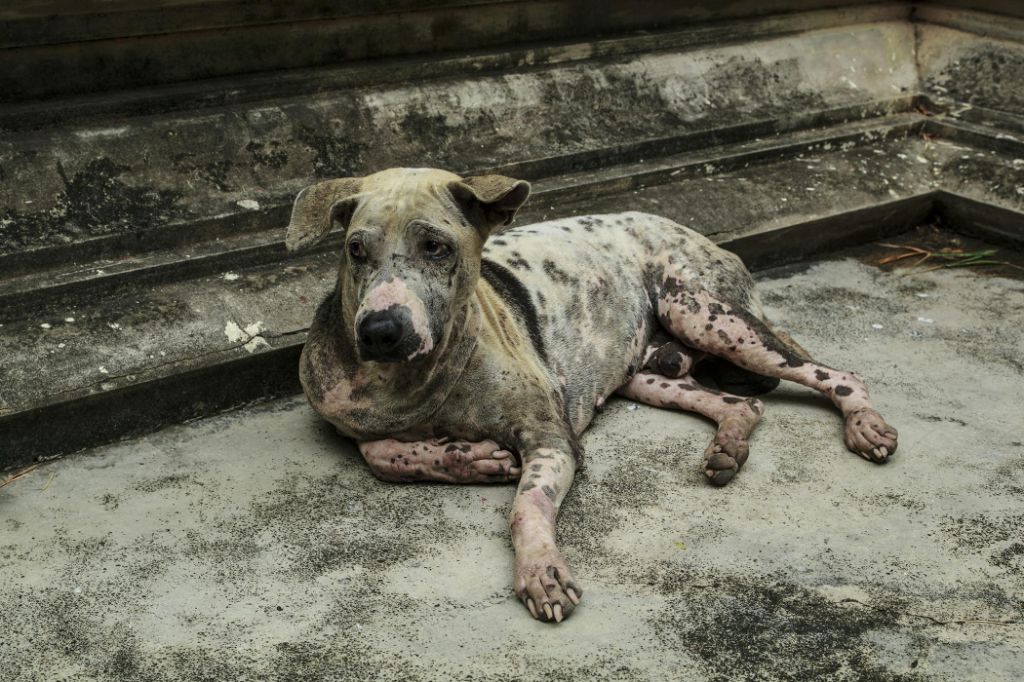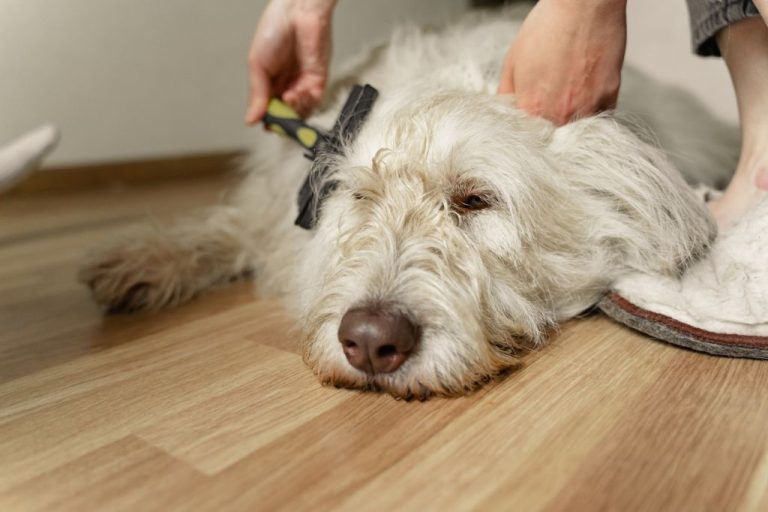Understanding Your Dog’S Skin: Common Issues And Solutions
A dog’s skin serves many important functions, including protecting against environmental threats, regulating body temperature, and preventing dehydration. Keeping your dog’s skin healthy is critical for their overall wellbeing. Unhealthy skin can lead to discomfort, infections, and more serious medical issues. Some common skin problems in dogs include allergies, parasites, infections, and autoimmune disorders. These conditions often cause symptoms like itching, hair loss, rashes, scaly skin, and lesions. While skin issues can stem from different causes, early diagnosis and proper treatment are key to managing the problem and restoring skin health.
In this article, we will provide an overview of dog skin anatomy, common skin conditions dogs face, how to spot signs of trouble, diagnosis methods, treatment options, and tips for prevention. Understanding the importance of skin health, recognizing issues early, and working with your veterinarian can help get your dog’s skin back into optimal shape.
Anatomy of Dog Skin
The skin of dogs has three main layers – the epidermis, dermis, and hypodermis or subcutis. The epidermis is the outermost layer and serves as a protective barrier. It is composed of several layers of cells that are constantly shed and regenerated. The dermis lies beneath the epidermis and contains blood vessels, nerves, hair follicles, sweat glands, and sebaceous glands. The hypodermis is the deepest layer of skin and is made up of fat and connective tissue (source).
Compared to human skin, dog skin tends to be thicker but more sensitive. The epidermis of dogs only has 3-5 cellular layers whereas human epidermis has 10-15 layers. Dogs also have fewer melanocytes, the cells that produce pigment, which is why dog skin shows pink rather than darker tones. Dog skin contains more hair follicles and sebaceous glands than human skin, but fewer sweat glands (source). These differences contribute to dogs being more prone to certain skin disorders.
Common Dog Skin Issues
Some of the most common skin issues in dogs include:
Allergies
Dogs can develop allergies to things like pollen, mold, dust mites, certain foods, and more. Allergic reactions cause inflammation and itching. Common allergy symptoms include excessive licking, chewing, and scratching, redness, and skin infections. Environmental allergies tend to worsen seasonally. Food allergies may cause gastrointestinal issues along with skin reactions. Allergies are diagnosed through elimination diets and skin or blood tests (Common Skin Problems in Dogs).
Parasites
Parasites like fleas, ticks, and mites can infest a dog’s skin and cause inflammation, itching, hair loss, and skin infections. Dogs may scratch, bite, or chew at their skin due to the irritation. Mange mites including demodex, sarcoptes, and cheyletiella mites burrow into the skin and cause mange. Diagnosis involves skin scrapings and microscopic examination to identify parasites (10 of the Most Common Dog Skin Conditions).
Infections

Bacterial and fungal skin infections can occur in dogs, especially in conjunction with other skin conditions like allergies or parasites. Signs include odor, discharge, crusting, and hair loss. Common fungal infections include ringworm and yeast. Staph and strep are common bacterial infections. Infections require medication like antifungals, antibiotics, medicated baths, etc. Cultures help identify the type of infection (Pictures of Skin Problems in Dogs).
Autoimmune & Endocrine Disorders
Some dogs may suffer from autoimmune skin diseases or disorders of the endocrine system. These conditions cause skin inflammation, sores, and infections. Examples include pemphigus, discoid lupus, hypothyroidism, and Cushing’s disease. Diagnosis often involves skin biopsies and blood tests. Treatment focuses on managing the underlying condition with immunosuppressants, hormone therapy, etc.
Allergies
Allergies are one of the most common causes of skin issues in dogs. An allergy occurs when the dog’s immune system overreacts to a usually harmless substance, treating it like an invader and triggering an inflammatory response. The most frequent allergens for dogs include:
- Flea bites
- Food proteins (e.g. beef, dairy, wheat, chicken)
- Environmental allergens (e.g. pollen, mold, dust mites)
- Contact allergens (e.g. grass, wool, plastic)
According to the Modesto Vet Hospital, symptoms of allergic reactions in dogs can vary greatly but often include chronic itching, licking, scratching, hot spots, hair loss, rashes, and skin infections. Other common signs include:
- Excessive licking of paws, belly, groin, or armpits
- Recurrent ear infections
- Watery eyes
- Sneezing and runny nose
- Diarrhea or soft stools
- Paw chewing/swelling
According to the Animal Hospital of Clemmons, diagnosing the specific allergen is key to properly treating the allergic reaction. This often involves diet trials, elimination diets, intradermal allergy testing, and/or blood tests.
Parasites
Common parasites that may infect a dog’s skin include fleas, ticks, lice, and mites. These external parasites feed on the dog’s blood and can cause severe itching, inflammation, and skin irritation. According to the Merck Veterinary Manual, parasites like D. insignis worms can burrow under the skin and cause swollen tracks and crater-like skin ulcers.
Symptoms of a parasitic skin infestation often include:
- Excessive scratching and chewing at the skin
- Hair loss
- Red, inflamed areas on the skin
- Crusting or scabbing on the skin
- Small bumps or pimple-like lesions
- Hives or rashes
Severe parasite infestations can cause great discomfort, constant itching, infections, and may lead to significant hair loss and skin damage if left untreated. Checking your dog’s skin regularly and using preventative flea/tick/mite treatments can help avoid parasitic infections.
Infections
Dogs can develop several types of skin infections caused by bacteria, yeast, and fungi. Some common infections include:
Bacterial Infections
Bacteria like Staphylococcus pseudintermedius are normal inhabitants of dog skin, but they can cause infections if conditions allow them to overgrow. Bacterial infections often cause crusting, pustules, hair loss, and inflammation [1]. Common areas affected include the chin, lips, ears, armpits, and between toes. Bacterial infections may be secondary to underlying conditions like allergies.
Yeast Infections
The yeast Malassezia pachydermatis lives on normal dog skin but can proliferate and cause infection. Yeast overgrowth leads to greasy, brown skin; hair loss; redness; and an odor like rancid oil or stale corn chips [2]. Yeast infections often occur in skin folds, ears, and paws.
Fungal Infections
Ringworm, caused by fungi like Microsporum canis, infects dog skin and hair. Signs include round, crusting patches with hair loss. Ringworm is contagious to other pets and people [3]. Other fungal infections like histoplasmosis can occur but are less common.
Autoimmune & Endocrine Disorders
Some autoimmune and endocrine system disorders can affect a dog’s skin health and cause issues. Two common examples are seborrhea and hypothyroidism.
Seborrhea is a skin condition that causes flaky, dry, greasy skin due to overactive sebaceous glands producing too much sebum. It can be primary or secondary seborrhea. Primary seborrhea has no known cause, while secondary seborrhea can be caused by factors like allergies, hormone disorders, and parasites. Symptoms include flaky, greasy skin and a musty odor.
Hypothyroidism is caused by an underactive thyroid gland not producing enough thyroid hormone. This can lead to skin problems like hair loss and seborrhea. Other symptoms include lethargy, weight gain, and intolerance to cold. Hypothyroidism is commonly seen in certain breeds like Golden Retrievers and Boxers.
Getting an accurate diagnosis for autoimmune and endocrine disorders from your vet is important, as many have similar skin symptoms. Blood tests and skin biopsies may be required. Treatment typically involves medications to regulate hormones and control symptoms.
Diagnosis
Diagnosing skin conditions in dogs typically starts with a thorough physical exam by a veterinarian. The vet will visually inspect the dog’s skin and coat for any abnormalities like redness, swelling, scaling, crusting, hair loss, and examine the dog’s ears, nose, and paws. The vet will also ask about the dog’s medical history and any changes in behavior or habits (
If the cause of the skin issue is still unclear after the physical exam, the vet may perform tests like skin scrapings or skin cytology. This involves gently scraping the affected area with a scalpel blade or slide and examining the sample under a microscope for signs of parasites, fungal infections, or abnormal cell growth (
Allergy testing like intradermal or blood tests can help identify environmental or food allergies triggering skin irritation and itching. Skin biopsies may be done for suspicious lesions. Bacterial or fungal cultures can identify infections. Thyroid testing and other lab work can check for hormonal or autoimmune disorders affecting the skin.
Treatments
There are several treatment options for common dog skin issues depending on the underlying cause.
Medications
Medications that may be prescribed include antibiotics, antifungals, antiparasitics, anti-inflammatories, and immunosuppressants. Antibiotics like cephalexin may be used for bacterial infections. Antifungals such as ketoconazole can treat fungal infections like ringworm. Ivermectin and milbemycin are antiparasitics that can eliminate mites and other parasites. Steroids and cyclosporine are immunosuppressants that reduce inflammation and overactive immune responses in allergic dermatitis [1].
Shampoos
Medicated shampoos containing ingredients like chlorhexidine, benzoyl peroxide, or miconazole can help treat bacterial or fungal infections on the skin surface and provide relief from itching and inflammation.
Allergy Shots
Allergy shots (immunotherapy) containing small amounts of the antigens a dog is allergic to can help desensitize the immune system over time and reduce allergic reactions.
Immunotherapy
Newer immunotherapy options like Apoquel and Cytopoint block inflammatory pathways to control itching and skin damage caused by allergic dermatitis.
Prevention
There are several steps dog owners can take to help prevent skin issues in their pets. Proper grooming and hygiene is important to keep your dog’s coat and skin clean and free of dirt, debris, parasites, and other irritants. Regular bathing using a gentle dog shampoo can help wash away allergens and keep their coat healthy. Be sure to thoroughly dry your dog after baths to avoid any moisture remaining on their skin.
Regular brushing and combing removes loose hair and distributes natural oils throughout their coat. This helps prevent matting which can cause skin irritation. Trimming the hair around the paws, belly, and rear can prevent feces and urine from clinging to the fur and irritating the skin.
Preventing exposure to parasites like fleas and ticks through the use of monthly preventatives is also key. These parasites can bite, burrow, and cause significant skin inflammation and discomfort. Consult with your veterinarian about safe and effective parasite prevention products.
Avoiding known skin allergens can also reduce flare ups. This may include certain proteins in food, grass, pollen, dust mites, mold, and other environmental triggers. If you know what your dog is allergic to, keep them away from those substances as much as possible.
With proper grooming, hygiene, parasite prevention, and avoidance of allergens, you can help keep your dog’s skin healthy and free of many irritating conditions.
https://www.scenthound.com/dogblog/how-to-prevent-dog-skin-conditions






